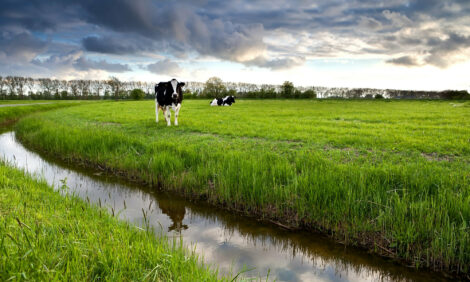



FAO Providing Agriculture, Fishing Kits to Help Sudan's Famine Risk
SOUTH SUDAN - South Sudan is at a risk of famine unless humanitarian assistance is provided now, FAO Deputy Director-General for Operations Dan Gustafson told a humanitarian pledging conference for the country in Oslo.“The food security crisis in South Sudan is now worsening and spreading westward to areas previously less affected,” Gustafson said, speaking at the conference co-hosted by Norway and the UN Office for the Coordination of Humanitarian Affairs (OCHA) to galvanize support for the conflict-stricken country.
“This trend is set to continue unless farmers can plant their fields, and herders can access their traditional grazing areas.” he added.
Some 3.5 million people in South Sudan are now experiencing crisis or emergency levels of food insecurity according to the Integrated Food Security Phase Classification, the global standard for measuring food security conditions, reports the World Food and Agriculture Organisation.
The central message from the conference was that peace, security, stability and unhindered humanitarian access remain the most critical factors in preventing a famine and in supporting affected populations, and are the responsibility of the parties to the conflict, reports the World Food and Agriculture Organisation.
FAO helping people fish, farm, protect livestock
FAO has been working in very challenging conditions in South Sudan caused both by conflict and seasonal flooding to provide the worst affected communities with means to produce food by distributing fishing, animal health, vegetable and crop emergency livelihood kits (see box right for details).
Gustafson praised donors who have already given $42 million to help FAO provide emergency livelihood support to 1.3 million people, but appealed for a further $66 million to scale up operations for the rest of 2014 and the first few months of 2015.
FAO is now scaling up its operations in conflict areas, working with humanitarian partners to reach vulnerable communities in remote locations by airlifts and trucks, to ensure maximum production from all of the nation’s farmers, pastoralists and fishers.
FAO is advocating for a combined approach to enhance food production and contribute to food security and nutrition; protecting livestock and other productive assets while providing life-saving food production kits in conflict-affected areas, and boosting production in areas less affected by conflict to ensure a minimum level of agricultural production.
“FAO has adapted most of its development initiatives and amplified its resilience work,” added Gustafson. “Our purpose is to mobilize maximum resources to address the dual imperative of tackling the critical food and nutrition crisis while also supporting the livelihoods of the viable but vulnerable producers in other parts of the country.”
To date, FAO has distributed 64 500 emergency livelihood kits, and another 110 000 kits are scheduled for distribution over the next two weeks.
The crop and vegetable seed kits help families capitalize on any access to land, even small plots, to plant different types of seeds and diversity their diets, while fishing kits provide the means to fish rivers and swamps for a source of protein that can be dried, smoked and preserved.
Protecting livestock is also essential, cattle in particular as a source of milk, and because animals are often the only assets displaced people can take with them, exchanging them for cash or grain in times of crisis.
With additional funding, the Organization will be able to support a total of 450 000 households in 2014 and preposition livelihood support for 116 000 households in the first three months of 2015.
Donors who have contributed to FAO’s response so far are Belgium, Canada, Denmark, , the United Kingdom, the United States of America, the Africa Solidarity Trust Fund, the European Commission Humanitarian Aid and Civil Protection (ECHO) and the UN’s Common Humanitarian Fund.
OCHA estimates that a total of 4 million people are in need of humanitarian assistance in South Sudan and more than 1.3 million people have fled from their homes since the onset of conflict in December 2013. OCHA expects one in two South Sudanese to be severely affected by December 2014.
TheCattleSite News Desk


